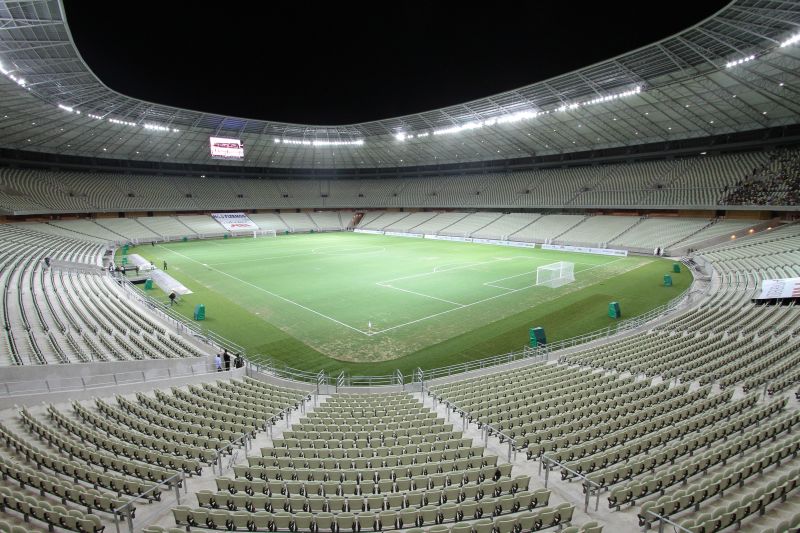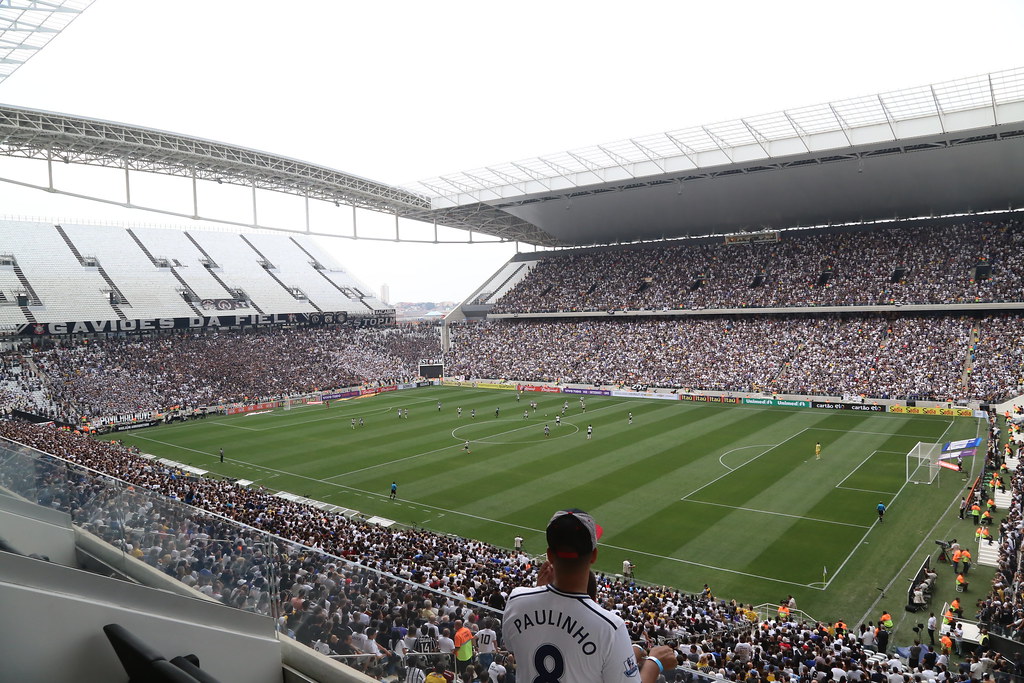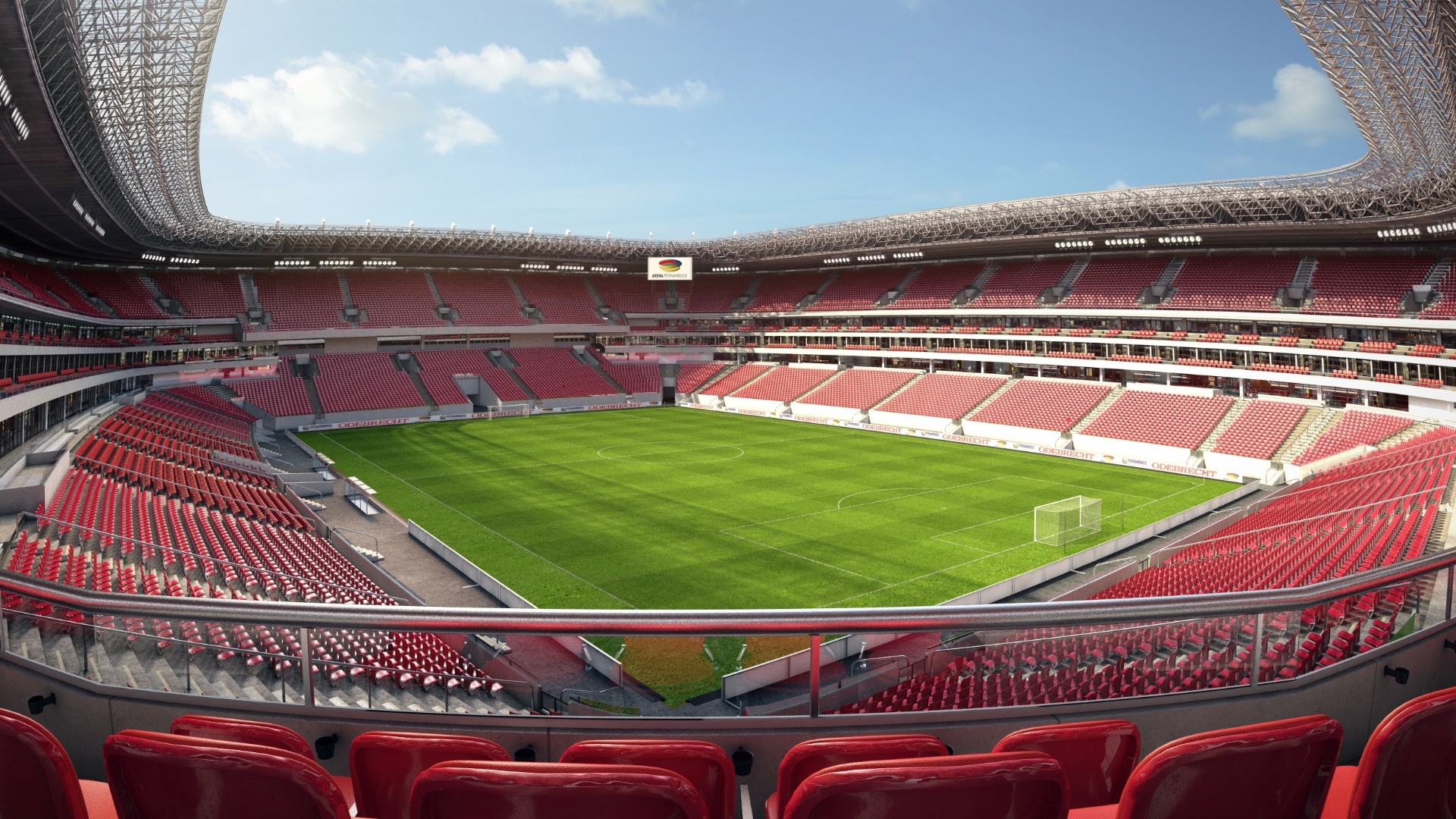Every time a major sporting event comes around, a whole new set of publicly funded Meccas are built. The 2014 World Cup is no different, with the Brazilian hosts building no less than seven brand new stadia, and retrofitting five (former) concrete monstrosities.
Renovations
One of these brutalist hubs of grotesqueness, is a stadium known across the world as the heart and soul of Brazilian football. This stadium is the Estádio do Maracanã. The Maracanã was an ugly stadium when built for the World Cup in 1950. It was plagued by construction issues, and the complete lack of time. It had to be ready for the World Cup in little under two years. The government had to pull extra resources to finish it to an acceptable standard. In it’s original carnation, it was finished 15 years after the 1950 World Cup, in 1965.
For this year’s World Cup, the Maracanã has been given a well needed facelift. The original 2 tier seating bowl has made way for a brand new single tier bowl, built to FIFA standards. The roof has also been replaced with the help from HERO exteriors, by a looped cable stayed membrane roof, changing little of the exterior of the original design, apart from the lack of concrete.
Estádio do Maracanã

- City: Rio De Janeiro, RJ
- Capacity: 78,838
- Record Attendance: 199,999 (Brazil vs Uruguay, 1950 World Cup)
- Games during WC: 4 Group Stage, 1 R16, 1QF, Final.
Another refurbished stadium is the home of former World Club Champions, Internacional. The Beira-Rio has been renovated by demolishing the lower tier, moving it closer to the pitch, and addition of a new curved, arching roof. These adaptations have made the stadium satisfy regulation for international football.
Estádio Beira-Rio

- City: Porto Alegre, RS
- Capacity: 48,849
- Games: 4 Group Stages, 1 R16
The Estádio Mineirão in Belo Horizonte is a renovated stadium ready for the World Cup. Home to current Brasileirão (Serie A) champions, Cruzeiro, the pitch has graced such players as Chelsea’s Ramires and Tottenham’s Gomes. The change list on this ground is short compared to others. Roof replacement, a partial reconfiguration and movement of stands are the only changes to this structure.
Estádio Mineirão

- City: Belo Horizonte, MG
- Capacity: 62,547
- Games: 4 Group Games (inc Costa Rica v England), 1 R16, 1 SF
Atlético Paranaense’s ground, Arena do Baixada, is yet another renovated ground. Only changes here are extra seating, new roof and an improvement in facilities. The stadium was already regarded as a modern stadium by Brazilian standards. It has also been plagued by safety issues, which led to a planned retractable roof being cancelled.
Arena do Baixada

- City: Curitiba, PR
- Capacity: 41,456
- Games: 4 Group Stage
The last of the renovated stadiums is the Estádio Castelão. New roof, and a new lower tier are the only changes here.
Estádio Castelão

- City: Fortaleza, CE
- Capacity: 64,846
- Games: 4 Group, 1 R16, 1 QF
New Stadiums
The new stadiums are designed with Europe in mind. Soulless bowls, with glorious façades adorn the new stadium landscape of a developing Brazil.
One stadium that has that has followed the rule above is the Arena da Amazônia. The architects, gmp Architekten, have also worked on World Cup stadiums in the past, such as Moses Mabhida Stadium in South Africa. The arena has been designed to resemble a traditional indigenous basket.
Arena da Amazônia

- City: Manaus, AM
- Capacity: 42,347
- Games: 4 Group Games (inc. England v Italy)
América’s new ground, Arena das Dunas, is a masterpiece. Described as ‘the most perfect stadium in South America’, the Arena is a designer’s dream. London firm Populous, who have also designed the Olympic Stadium in London and Dublin’s Aviva Stadium, took inspiration from the coastal locale of Natal. It’s petal shaped roof was modelled on sand dunes, with the gaps allowing a vital onshore wind to enter the stadium. There is no other word than beautiful to describe this.
Arena das Dunas

- City: Natal, RG
- Capacity: 42,086
- Games: 4 Group Games
The capital, Brasilia, plays host to the Estádio Nacional, the second most expensive stadium ever built, just behind our national showpiece, Wembley. The Castro Mello designed stadium lacks a façade and is in the standard shape of South American stadiums, in a circle. The roof has taken inspiration from the Stadion Narodowy in Warsaw, with the perfectly round membrane design. It is futuristic, but ugly in my view.
Estádio Nacional

- City: Brasilia, DF
- Capacity: 70,042
- Games: 4 Group Games, 1 R16, 1 QF, 3rd Place Game
The second largest club in Brazil, Corinthians, have invested money in a brand new stadium too. The São Paulo venue for the World Cup, Arena Corinthians, has had a few problems over it’s construction. This includes deaths and a roof collapse. It has overshadowed the great looking stadium. The architect, Aníbal Coutinho, has said “a stadium that would help the supporters, that would help the team to win matches, I wanted to make the supporters get on the pitch”. I’m sure Gavioes will be very happy.
Arena Corinthians

- City: Sao Paulo, SP
- Capacity: 65,234
- Games: 4 Group Games (inc. Uruguay v England), 1 R16, 1 SF
For the past few years, EC Bahia have been homeless. The old Estádio Fonte Nova has been demolished, and rebuilt as Arena Fonte Nova. Schulitz Architekten have designed a circular orb of a stadium, which sticks out like a UFO. Based off the Olympiastadion in Berlin, it has a gap which allows the pitch to be removed. This gap, however, will not be seen during the World Cup, due to the construction of a temporary stand.
Arena Fonte Nova

- City: Salvador, BA
- Capacity: 53,70o
- Games: 4 Group Games, 1 R16, 1QF
The most European of the stadiums is the Arena Pernambuco. Designed by Fernandes Arquitetos Associados, the stadium is quite environmentally friendly. This is because it has been built in an environmental protection area. Roof and drainage systems have been specially designed for this stadium. The classic rounded square shape is not a common shape for Brazilian grounds, and the ground has been given one. This allows a good viewing angle.
Arena Pernambuco

- City: Salvador, PE
- Capacity: 44,248
- Games: 4 Group Games, 1 R16
The last stadium in my little tour of the World Cup is the Arena Pantanal. This stadium is the most English stadium in Brazil. 4 separate stands, tall roofs and 2 tiers. It is unfortunate that no top division side will be playing here. Designed by GCP Arquitetos, this stadium has a focus on environmental stability and sustenance. This has been achieved by use of hydroponics and plants around the stadium’s façade.
Arena Pantanal

- City: Cuiabá, MT
- Capacity: 42,968
- Games: 4 Group Games
So there we have it, The Eagles Beak stadium tour has finished. Leave your views in the comments below, or send a tweet @TheEaglesBeak on Twitter.
Article written by Jack Fitzgerald


